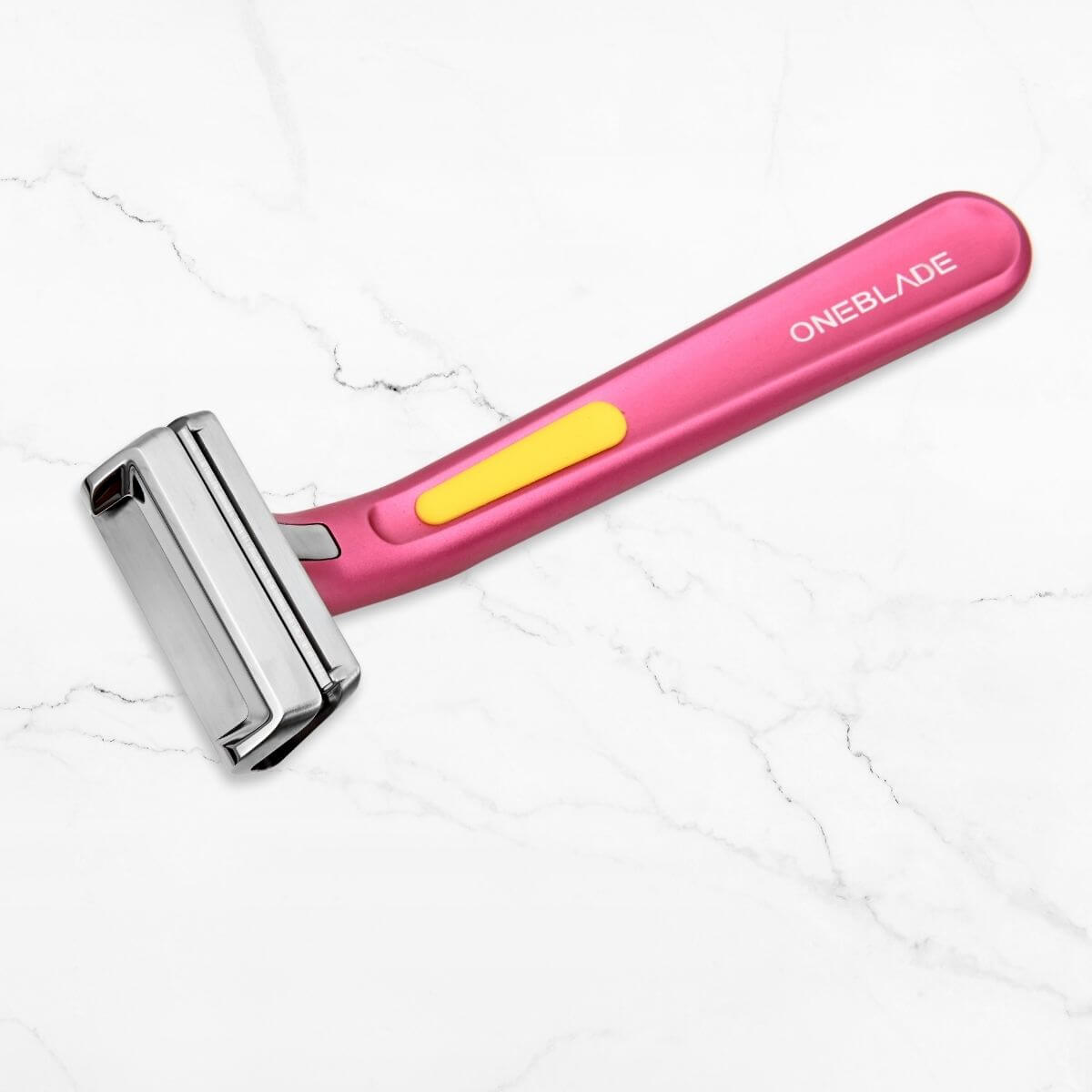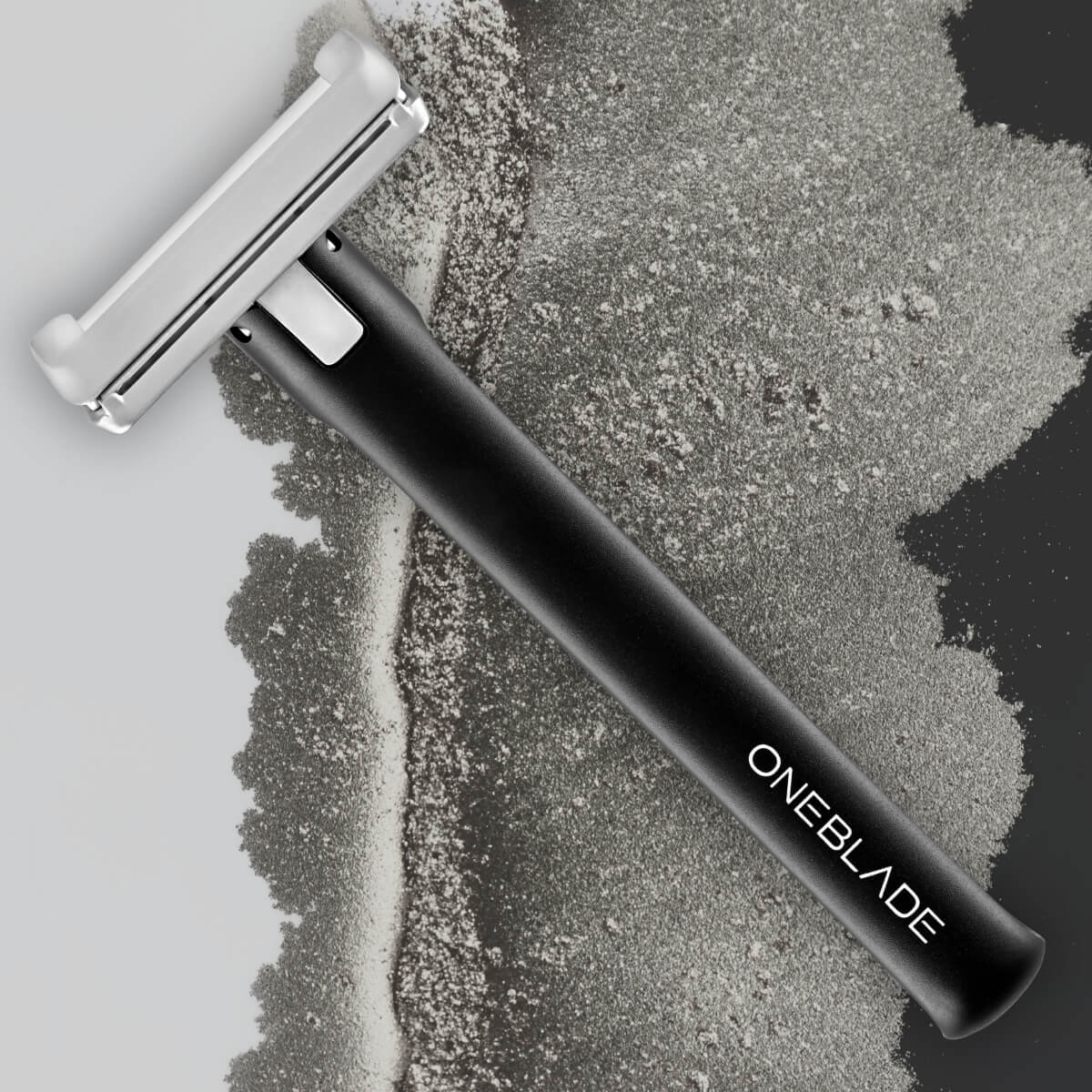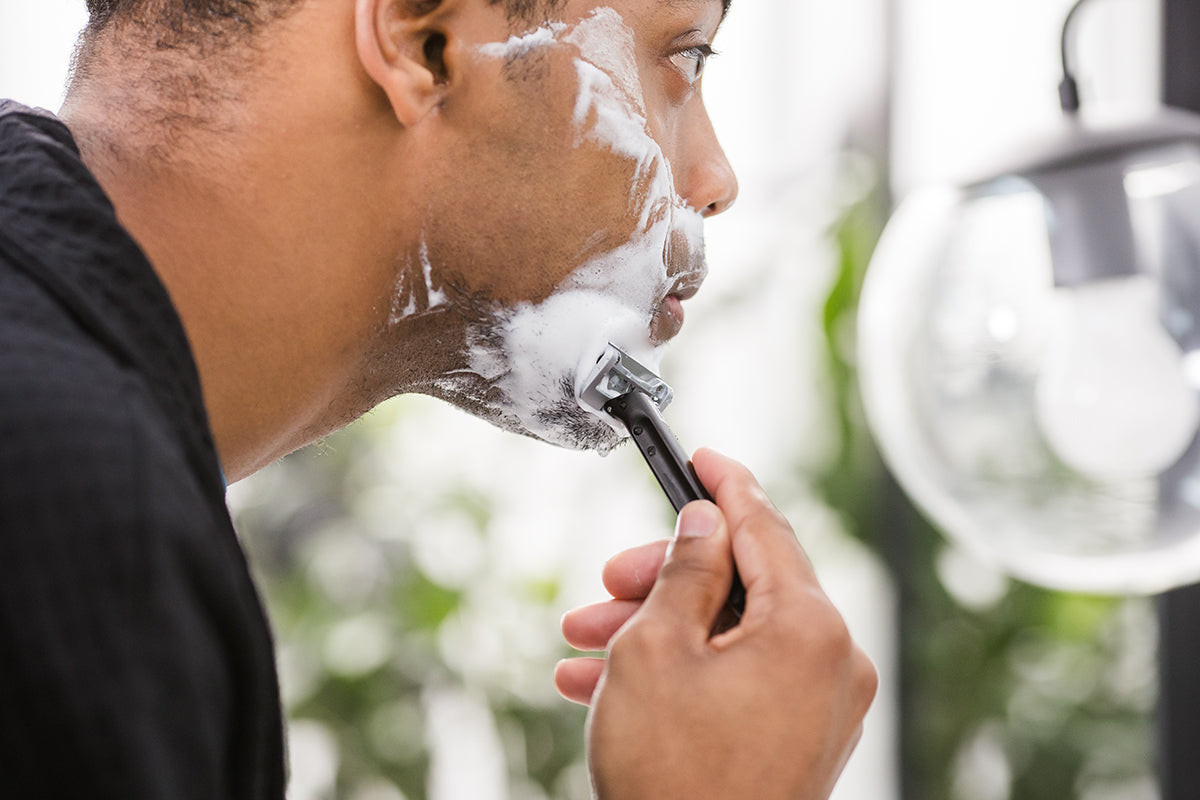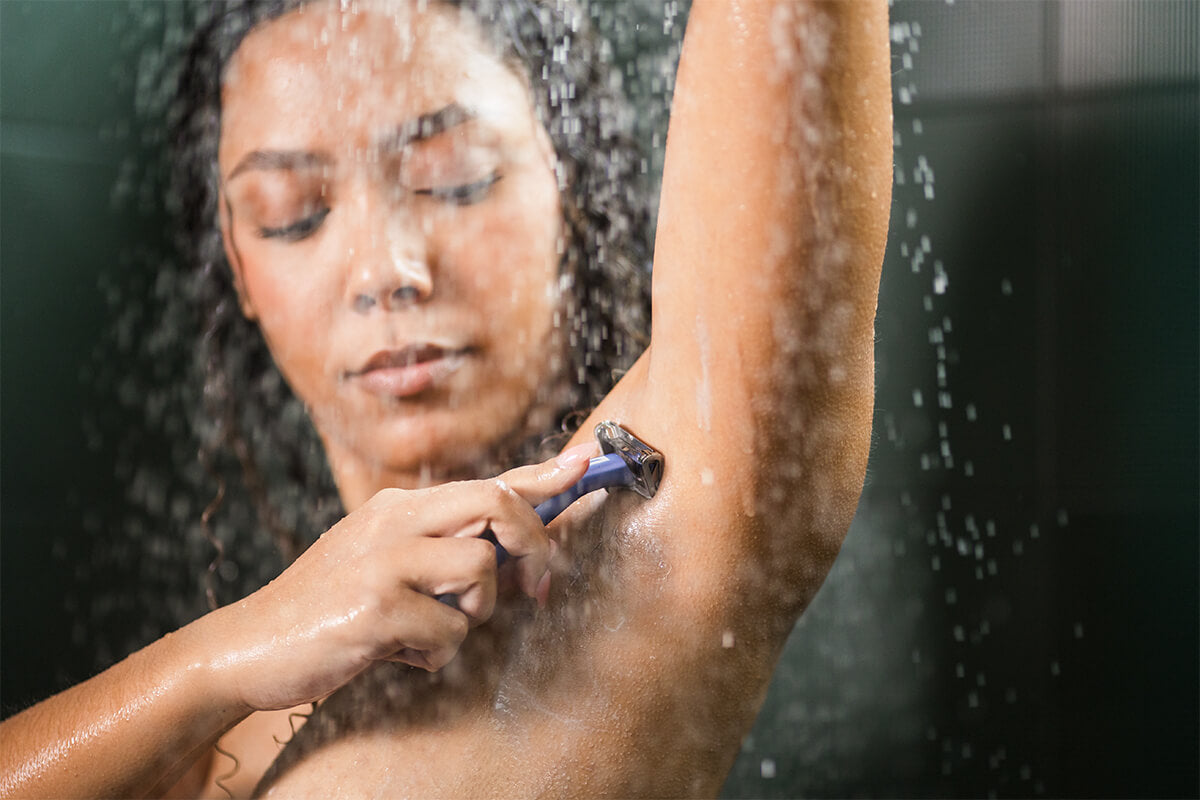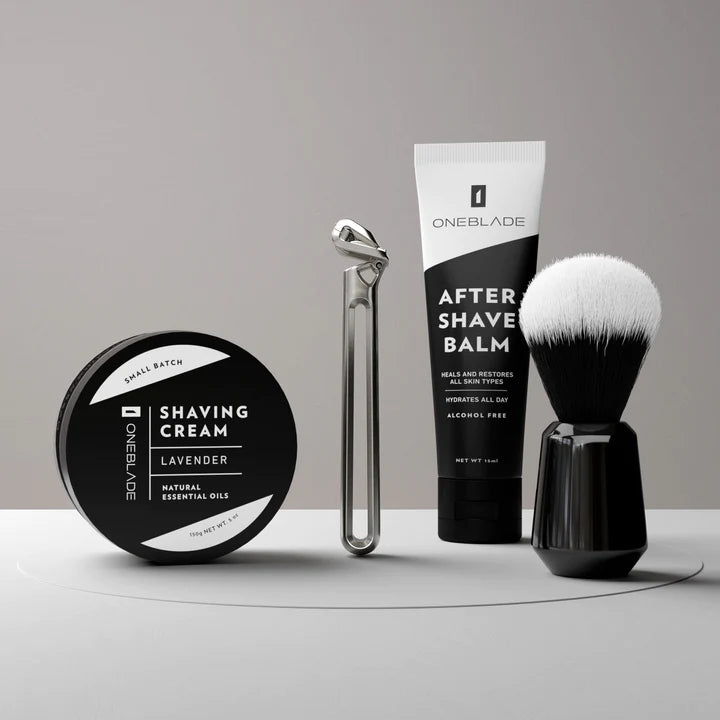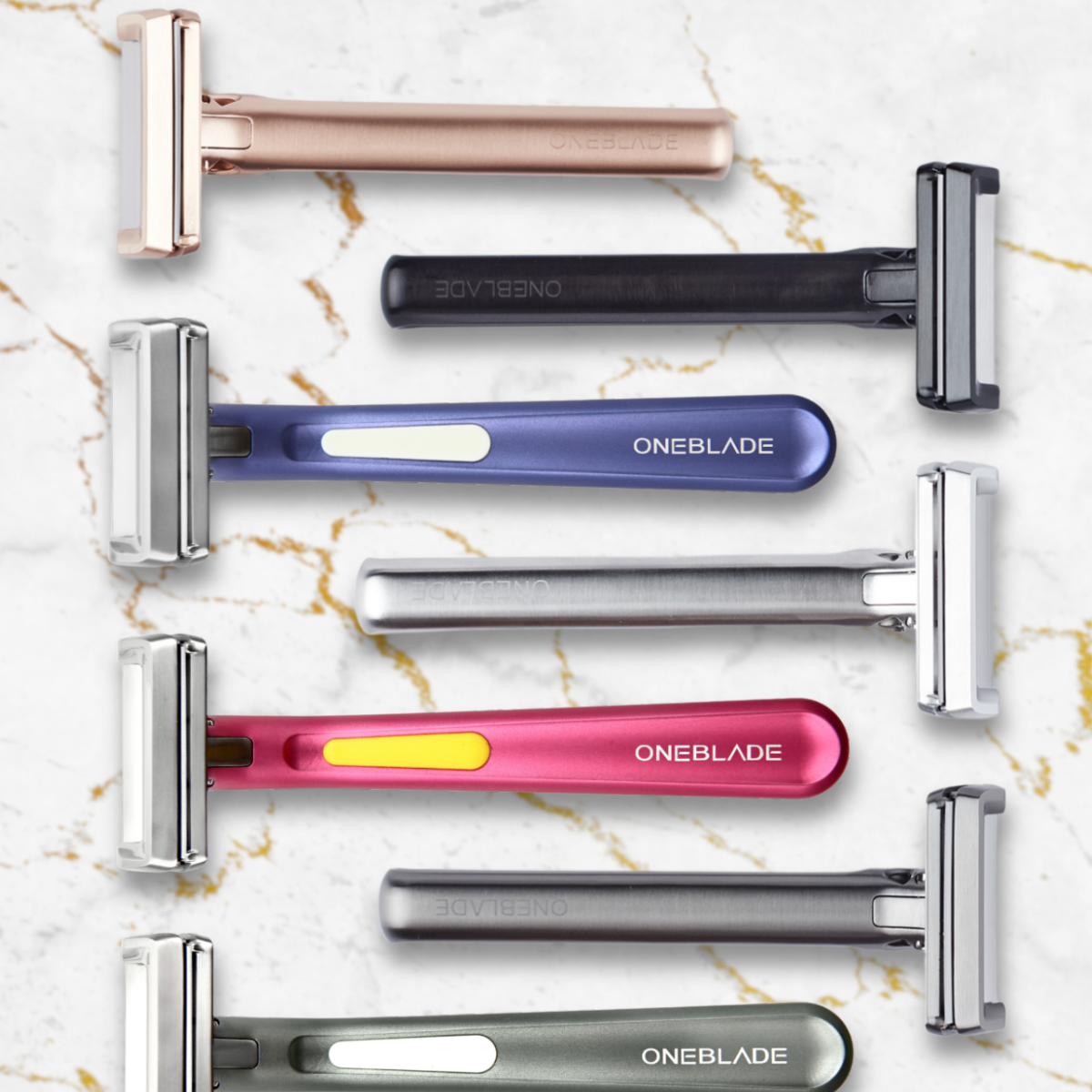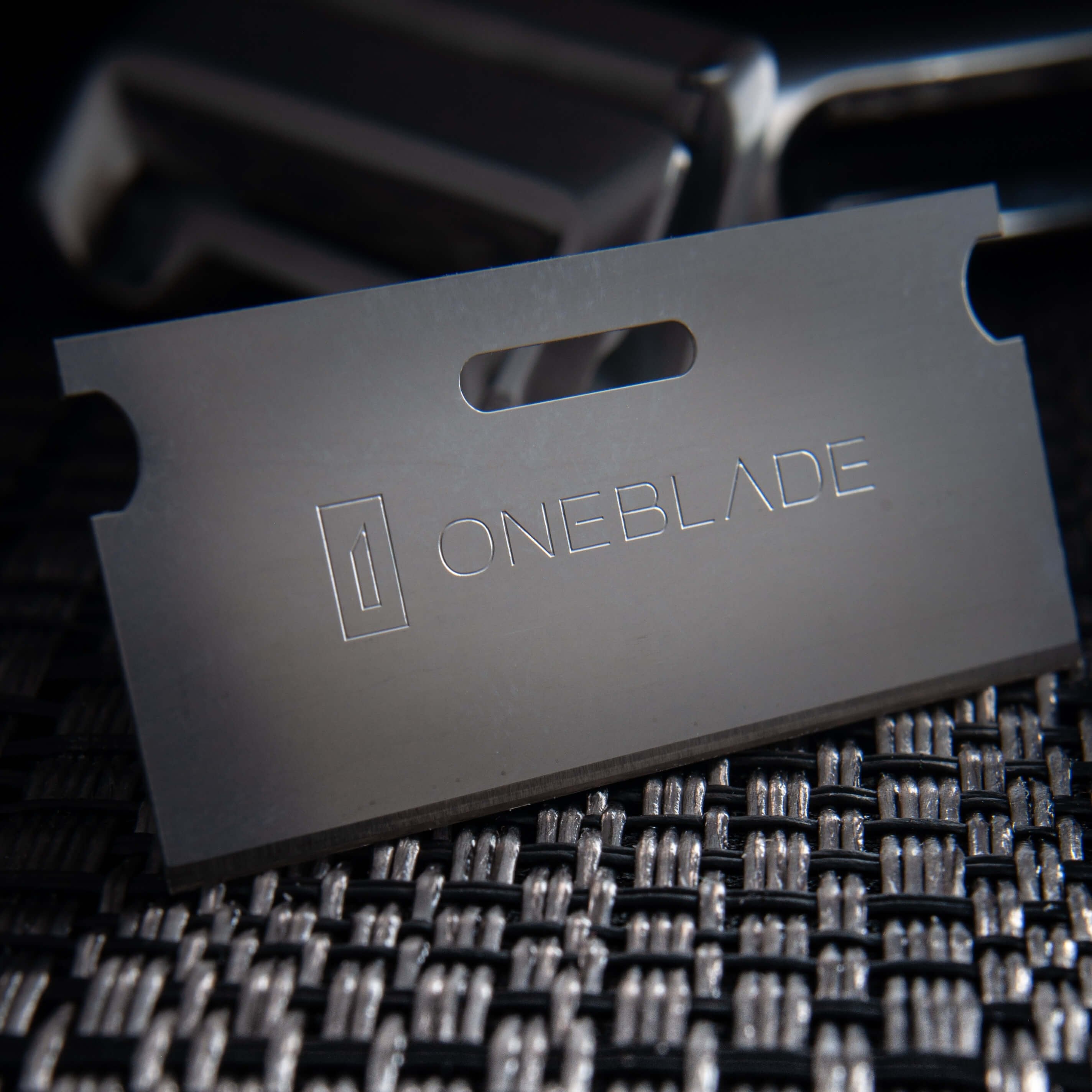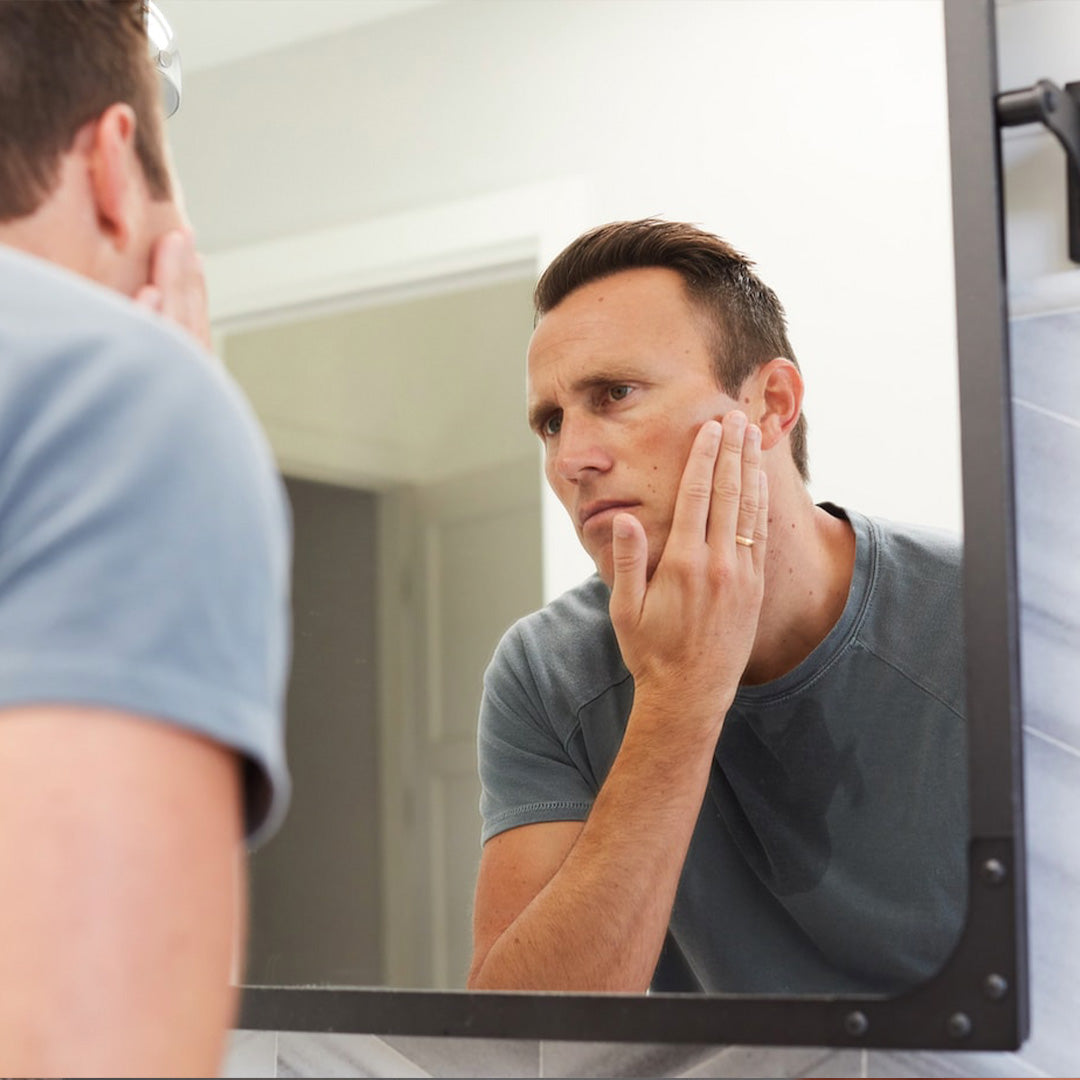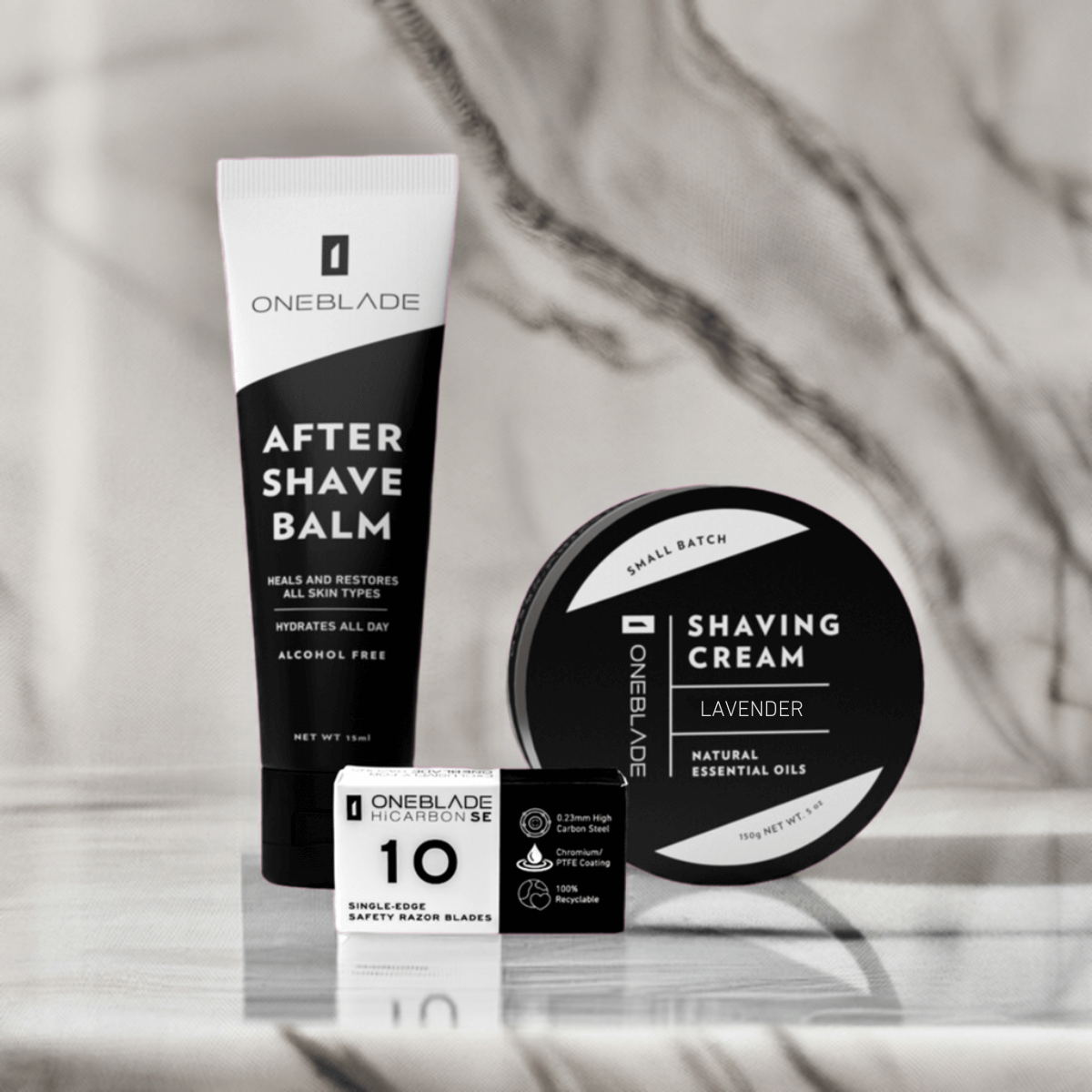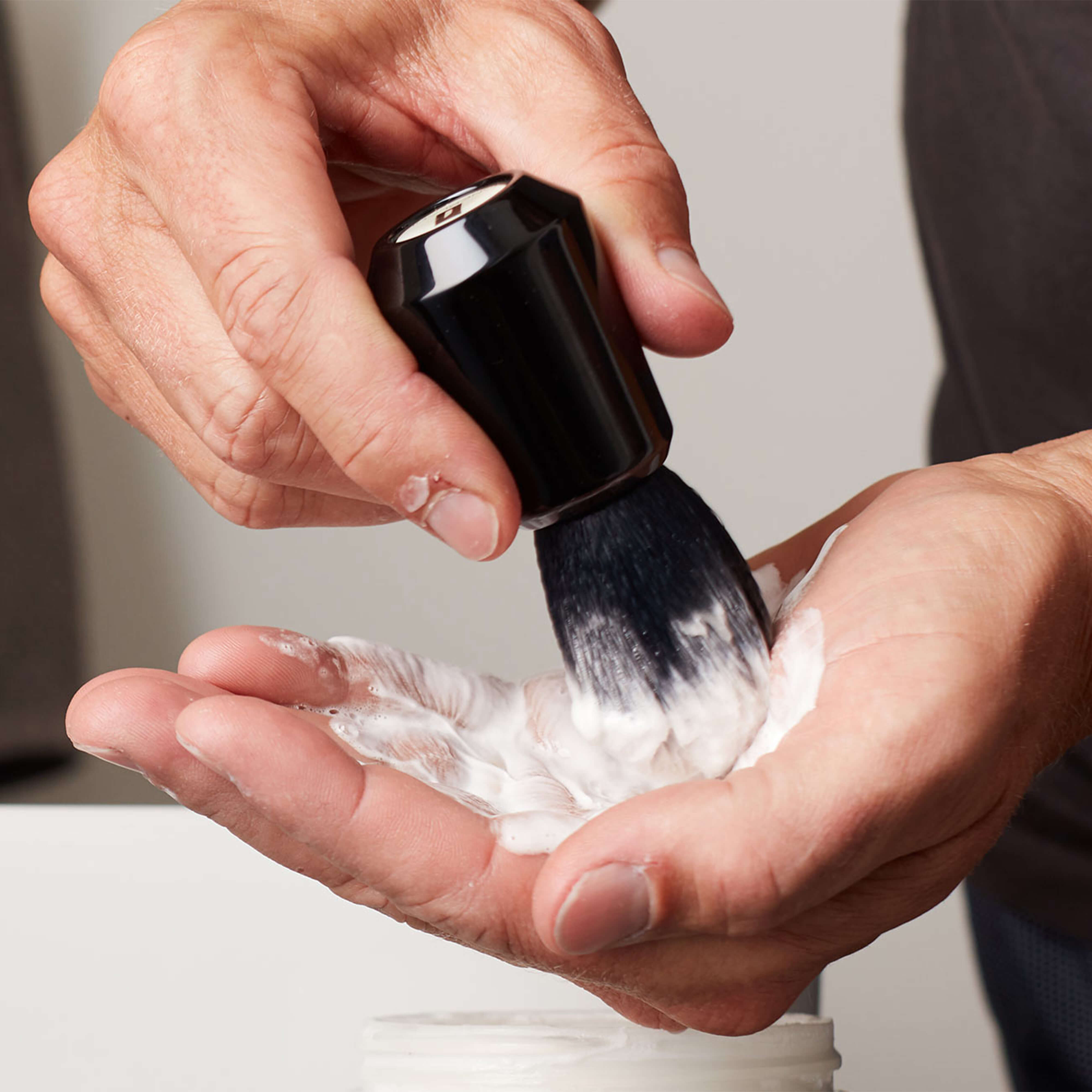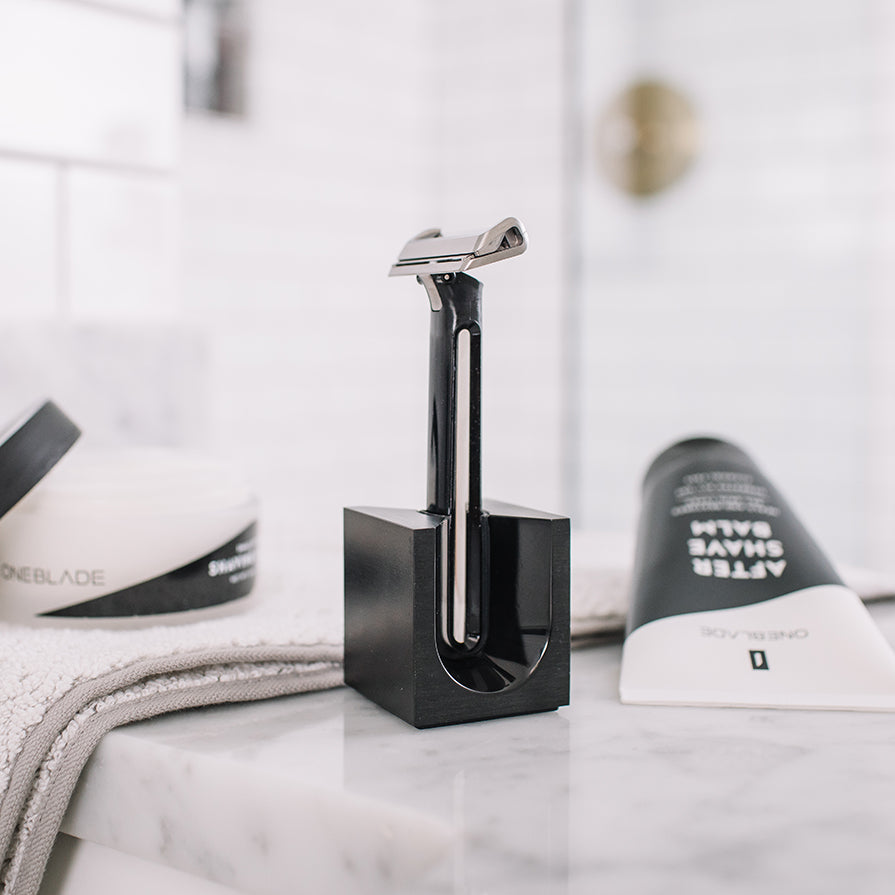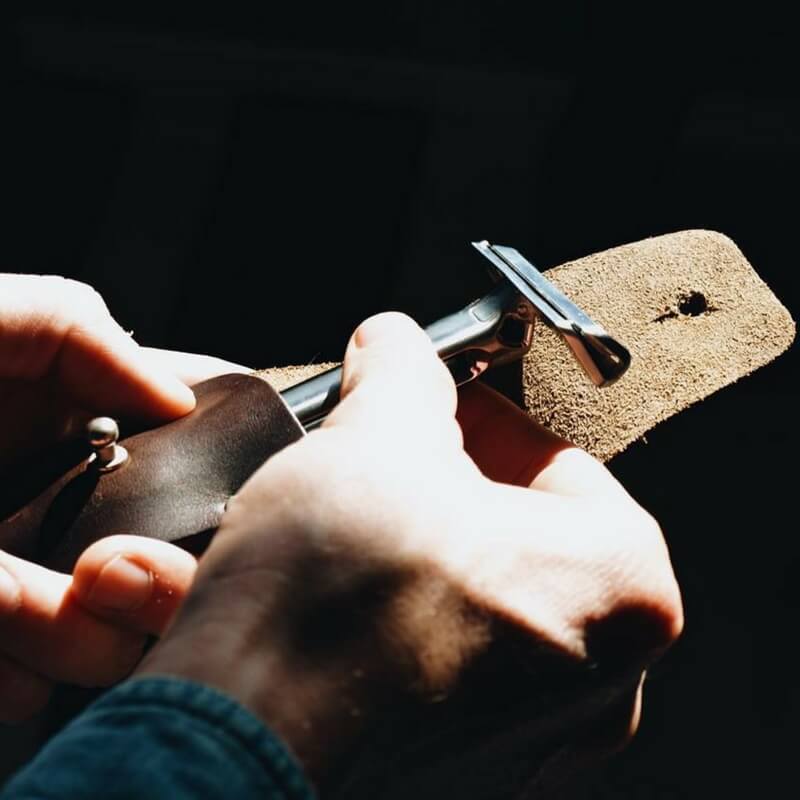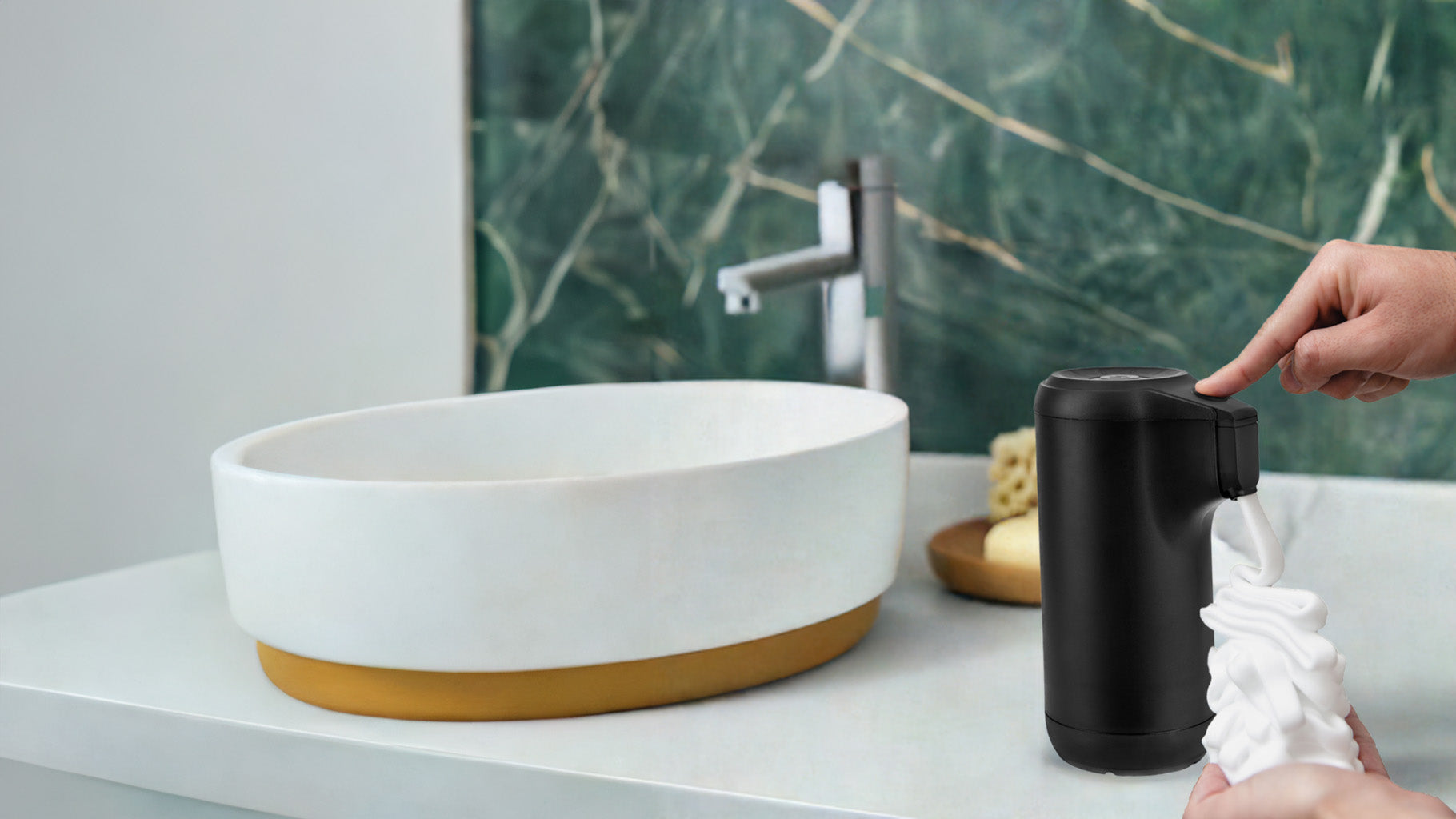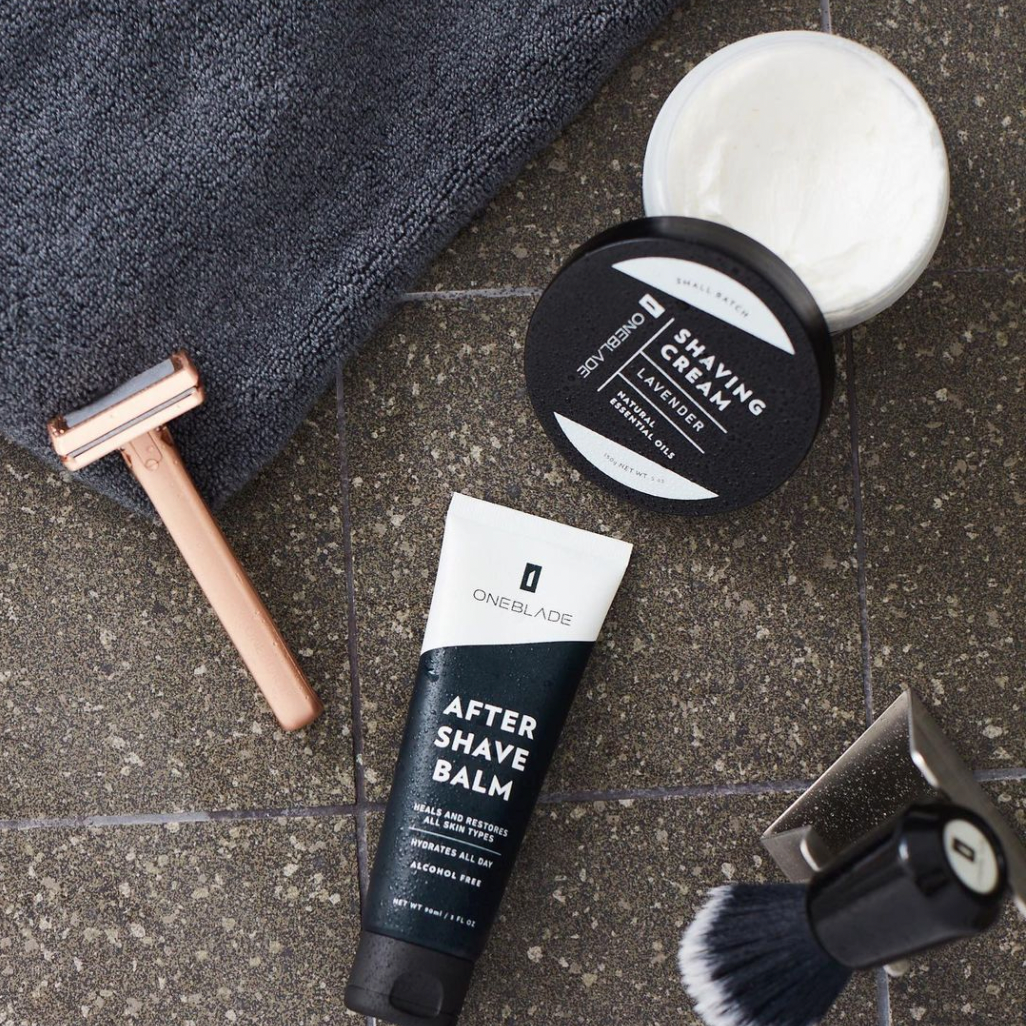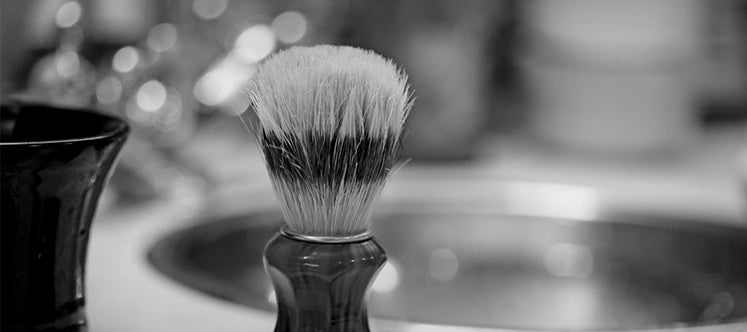We spent multiple years developing more than 1,000 prototypes in pursuit of a razor system that would truly become the easiest, most intuitive, safest way to begin shaving with a single blade. But, like any precision instrument, there are a few key guidelines that you will want to keep in mind when you begin. With just a bit of practice, you’ll be on your way to the best shaves — and the best skin — of your life.
#1: Insert a Single Blade the Right Way
When you're ready to shave with a OneBlade safety razor, be sure to load your Feather blade properly. Carefully remove a Feather FHS-10 blade from its wrapper. You may notice a tiny amount of adhesive on the blade — that’s perfectly normal as it helps protect the sharp edge of the blade from contact with the blade box while in transit.

(You’ll notice half circle cutouts in the blade closer to the dull end)
Holding the blade by the dull end, run it under some water and then insert it sharp end first into the back of the safety razor head. No need to press hard (and be sure not to use any upward force) — if it feels like you’re having to force the blade in, simply back it out and then try again.

When you're inserting a blade into a OneBlade CORE, be sure to check that the blade edge is flush with the reference surfaces and not overextended on either end.


To remove your blade, gently lift up on the back of the blade as you’re pulling it out – this lift helps to unlatch the blade from our quick-load blade mechanism.
#2: Use Quality Shave Cream & Lather Until You See No Skin
Proper lather technique using a quality shaving cream or soap formula is key to effectively lubricating your skin for contact with a single blade safety razor.

If you’ve used a canned gel or foam in the past and felt like it worked well, know that these cheaper “shaving creams” often contain synthetic perfumes, which are a leading cause of skin irritation. They also often contain artificial colors and dyes, preservatives, alcohol, and numbing agents, all of which can make a shave very uncomfortable and leave the skin susceptible to razor burn. If that weren't bad enough, they typically contain unhealthy gases, which are what make them foam in the first place. The foam that comes out of a can may appear like rich lather, but in fact it contains lots of gas and provides very little protection for your skin.
A quality shaving cream, on the other hand, will be alcohol-free and rich in natural ingredients like essential oils (essential oils are concentrated essences of plants, roots, fruits, or flowers, and are 100% natural). These creams tend to provide the richest and most lubricating shaving lathers and will leave your face feeling smooth and moisturized.
You’ll want the shaving cream to be thick and moisturizing but not run down your face, so be mindful that you're adding water to your lather but not overwatering. And you’ll know you have a good lather when it’s rich and you can no longer see skin — typically 20-60 seconds worth of lather building. Note that the longer you whisk, the richer the lather, the smoother the shave and the more your skin will be protected.
#3: Embrace the Reference Surfaces for Shaving Angle
By incorporating very prominent “reference surfaces” on the front of our razors — flat surfaces above and below where the blade protrudes — OneBlade enables users to easily engage and maintain an optimal shaving form at all times.

While shaving, you want to make sure that both reference surfaces are pressing against your skin, with slightly more pressure being applied to the upper reference surface (which will engage the pivot). This means that you’re actually rotating the razor handle about 10-15° relative to your skin, with your elbow slightly bowed out.
Sometimes it can help to practice this angle technique by lightly running the razor down your cheek a few times without a blade actually loaded. Make sure that both the upper and lower reference surfaces are flush against your skin, and get comfortable engaging the pivot.
#4: Use Minimal-to-No Pressure on the Single Blade
Multi-blade cartridge razors with their “lubricating strips” have taught us that it’s perfectly okay to press hard in order to get a close shave while “scraping” your hairs away — don’t believe this as it's a recipe for ingrown hair, razor bumps, and skin irritation!

With a single blade, you want to let the weight of the razor and sharp blade edge do most of the work for you. By incorporating a multi-pass shave routine, you’re also gradually reducing your hair using multiple, very controlled passes. And typically, you’re shaving in a combination of directions relative to your hair growth through these passes. That means you're cutting hair at skin level, not beneath it.
Tip: Be perfectly comfortable with not removing all of your hair in your first pass — think of it as a "pre" pass before you really start to get close to skin level with pass #2.
#5: Apply an Alcohol-Free After Shave
Once you’re finished with your last shaving pass, rinse off the remaining shaving cream and splash your face with cold water. Use a towel to pat your face dry, then apply a small dab of an alcohol-free, moisturizing after shave balm, like our Black Tie After Shave Balm. Gently massage the product into your skin. The whole process takes mere seconds, and can make the difference between a smooth, high quality shave and one rife with red bumps and irritation.
Take some time to get to know your razor in the beginning, and you'll reap the benefits for future shaves. And if you're having any difficulty, you can always email us at hello@onebladeshave.com — we love hearing from you!

